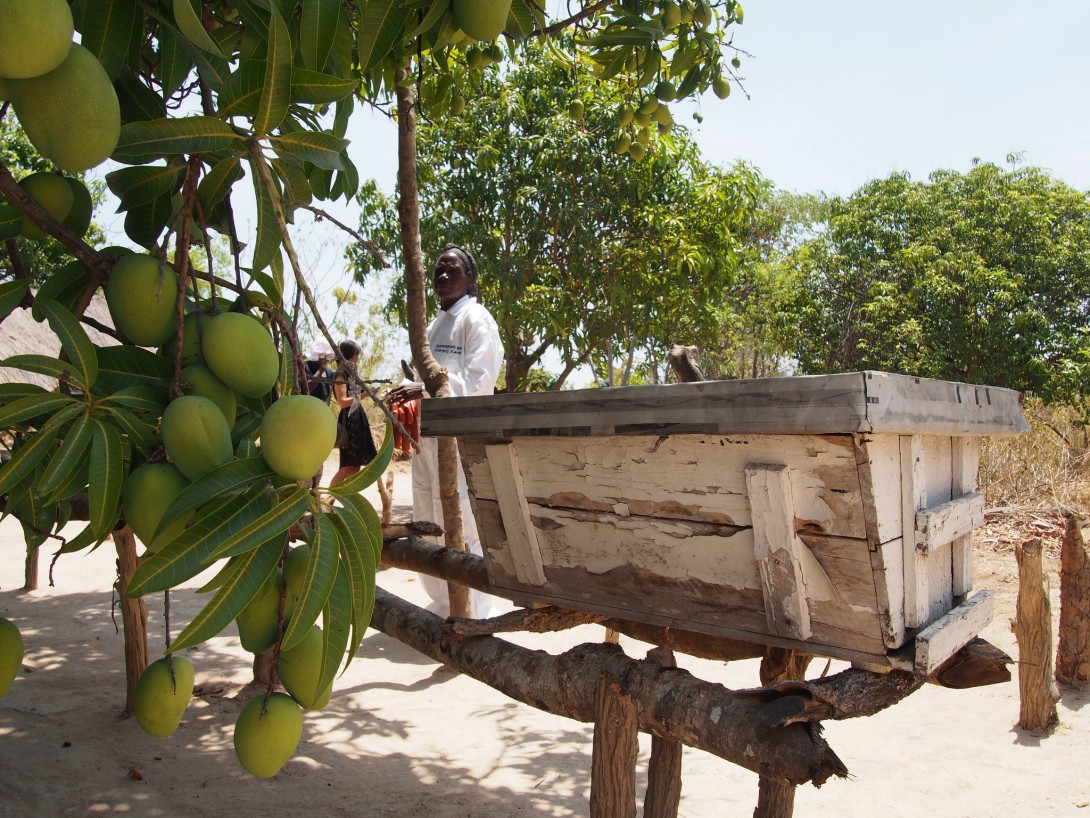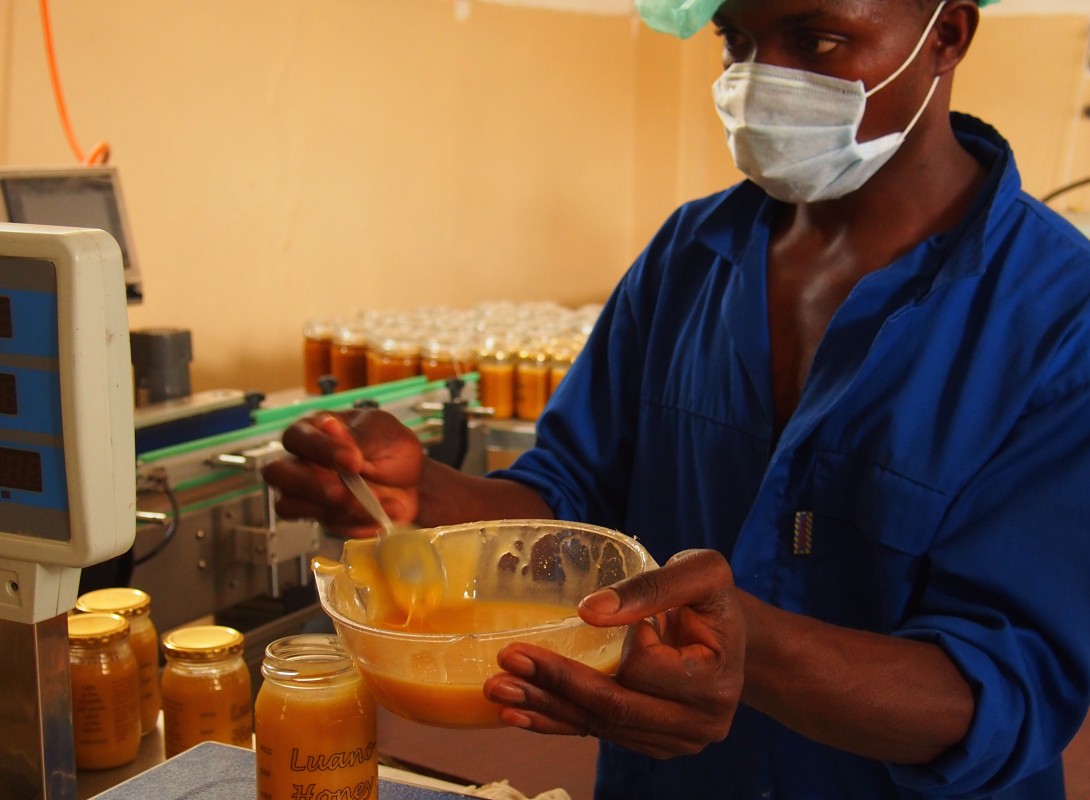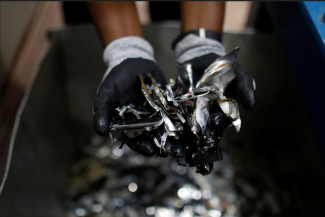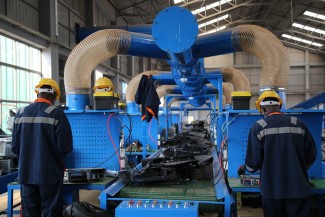When over six thousand beekeepers change their practices, you know that something important is happening
Recognising that traditional honey harvesting damages the forest, Zambia’s rural communities are using modern beekeeping practices that value trees and produce better quality honey. This, and a number of other market measures, has seen Zambia’s honey exports grow by 700% — from EUR 163,000 to EUR 1,316,000 — over the past five years.
“The project has made significant impact on Zambia’s apiculture sector. Not only has it increased the productivity of the sector, it has reduced deforestation and encouraged more women into beekeeping,” says Griffin Nyirongo, EIF Project Manager at Zambia’s Ministry of Commerce, Trade and Industry, which has collaborated with SNV Zambia and the Enhanced Integrated Framework over the past four years to support the development of a sustainable and inclusive honey sector.
Zambia’s economy has grown annually by over 6% in the last few years due to the mining sector and the demand for copper, which is fuelled by the global electronics industry. In rural communities, particularly in northwestern Zambia where mining dominates and access to income is limited, small-scale beekeeping can contribute significantly to livelihood security.

TREE CHANGE
The traditional way of harvesting honey is less like farming and more like hunting, Nyirongo says.
“First you need to cut down trees to make beehives from the bark. You then climb the tree and place the beehive in a spot up high. When it is ready to harvest you have to disturb the honeycomb and you scoop everything out with your hands,” he says.
With EIF's support, the Ministry of Commerce and the SNV Netherlands Development Organisation set out to train 5,000 beekeepers in modern apiary management but exceeded its target, reaching 6,580 beekeepers.
It was able to do that through a training-of-trainers approach with Zambia Forestry College.
“First 50 people were trained, they then each trained 10 people, and before you know it a we have 500 extension agents who were able to support farmers at a local level, which made all the difference,” Nyirongo says.
The beekeepers were given modern beekeeping equipment — hives, protective clothing, harvest and storage buckets and smokers — and trained in harvest and post-harvest techniques, apiary management and entrepreneurship skills. These practices were quickly adopted by beekeepers.
"With modern hives, it is easy to monitor hives for red ants and other predators."
Richard Kadimba, a beekeeper from Kabompo
“When I used traditional bark hives, they were warping and easily got destroyed. With modern hives, it is easy to monitor hives for red ants and other predators,” says Richard Kadimba, a beekeeper from Kabompo.

And by making communities aware of how trees are a source of food for bees, beekeepers now check the vegetation in the area and the availability of water for bees during apiary establishment.
“We now know that bees can be kept in bee-hives. Previously our understanding was that bees are only found in the forests, and honey was gathered through honey hunting,” says a beekeeper from Machiya, a village in the Copperbelt province named for its vast reserves of copper metal.
Modern hives are also easier to monitor, Nyirongo says, and produce higher quality honey resulting in better access to better markets and prices.
“We saw reduced losses because with the modern hives you can lift out the combs and see which are ready and take them out. As a result, handling honey is easier and more hygienic,” he says.
Training has also focussed on assisting rural beekeepers to generate more products from the hives, like artisanal candles and honey wine.
“I know where to sell my honey. I no longer use it for making imbote [a local alcoholic beverage] which is less profitable,” says a member of Chisanga beekeeping group.

BUYING BULK
Previously, beekeepers used to keep honey in whatever containers they would get and incur costs in transporting honey to long distances looking for the buyers.
“Honey processors had to travel vast areas to collect honey. They had go to various farms where beekeepers are. Not only is this time consuming but it also left out beekeepers where motorized transport couldn’t access their farm,” Nyirongo says.
The construction of 18 bulking centres has improved the storage of honey, reduced transaction costs and significantly contributed to the improved quality and subsequently access to markets. The processors are also able to get honey from one place directly from the producers rather than relying on traders.
Communities also made contributions in kind to the construction.
“This helped create a level of ownership and an interest to maintain the facilities,” Nyirongo says.
Through improved training and storage, farmers have improved quality of their product and improved access to markets and achieved higher prices.
Laston Mwape is one of more than 6,000 beekeepers connected to extension services who is now collaborating through bulking centers to facilitate access to higher value markets. His honey business has become very profitable — he is collecting up to twelve 20-liter buckets per harvest, which comes twice a year from June to August, and again from November to January.
“I bought cattle, built a house [and my] children go to school,” he says.
The quality of Mwape’s honey has also improved significantly since participating in the project. Processors say that honey bought from trained beekeepers is of superior quality when compared to untrained beekeepers.
Of the 2,653 beekeepers now directly attached to the bulking centre, at least 38% are women, exceeding the 30% target placed by the project.

QUEEN BEE
Beekeeping in Zambia has traditionally been a predominantly male occupation. Male beekeepers have been reluctant to allow women into the sector based on both tradition and safety considerations.
“It was a general understanding that women’s participation in the bee products sector could only be enhanced through the use of acceptable modern hives, located close to their respective homes,” Nyirongo says.
The adoption of modern beekeeping technologies has created an environment where women are encouraged to participate in the sector. The project also deliberately targeted groups and entities that are led or owned by women participating in the sector. One of those groups was the Kabule Women’s Beekeeping group — a group of 20 members based in a town in the middle of Zambia called Kapiri Mposhi.
The group has received training and has been linked to Luano honey as the main buyer, which increased their production from 45 buckets of honey at the start of the program to more than 300 in 2015. They also managed to secure the sale of their entire bulk product.
"We hope to attract the entire community."
Dorothy Mambwe, a member of the Kabule Women’s Beekeeping group
“The majority of members, if not all, have husbands with no jobs and some are widows keeping orphans. This project has really uplifted their standard of living in all aspects… through the profits they get from the club they are able to pay for their children’s [tuition],” says Dorothy Mambwe, a member of the group.
“Our future plans are to go into extraction so we can produce soap, candle and other beeswax products. We hope to attract the entire community,” she says.
View more photos of Zambian beekeepers in action on the EIF Flickr account.
Header image of returnees to Ethiopia in Addis Ababa amid COVID-19 - ©UNICEF Ethiopia/NahomTesfaye via Flickr Creative Commons Attribution-NonCommercial-NoDerivs 2.0 Generic (CC BY-NC-ND 2.0) license
If you would like to reuse any material published here, please let us know by sending an email to EIF Communications: eifcommunications@wto.org.



